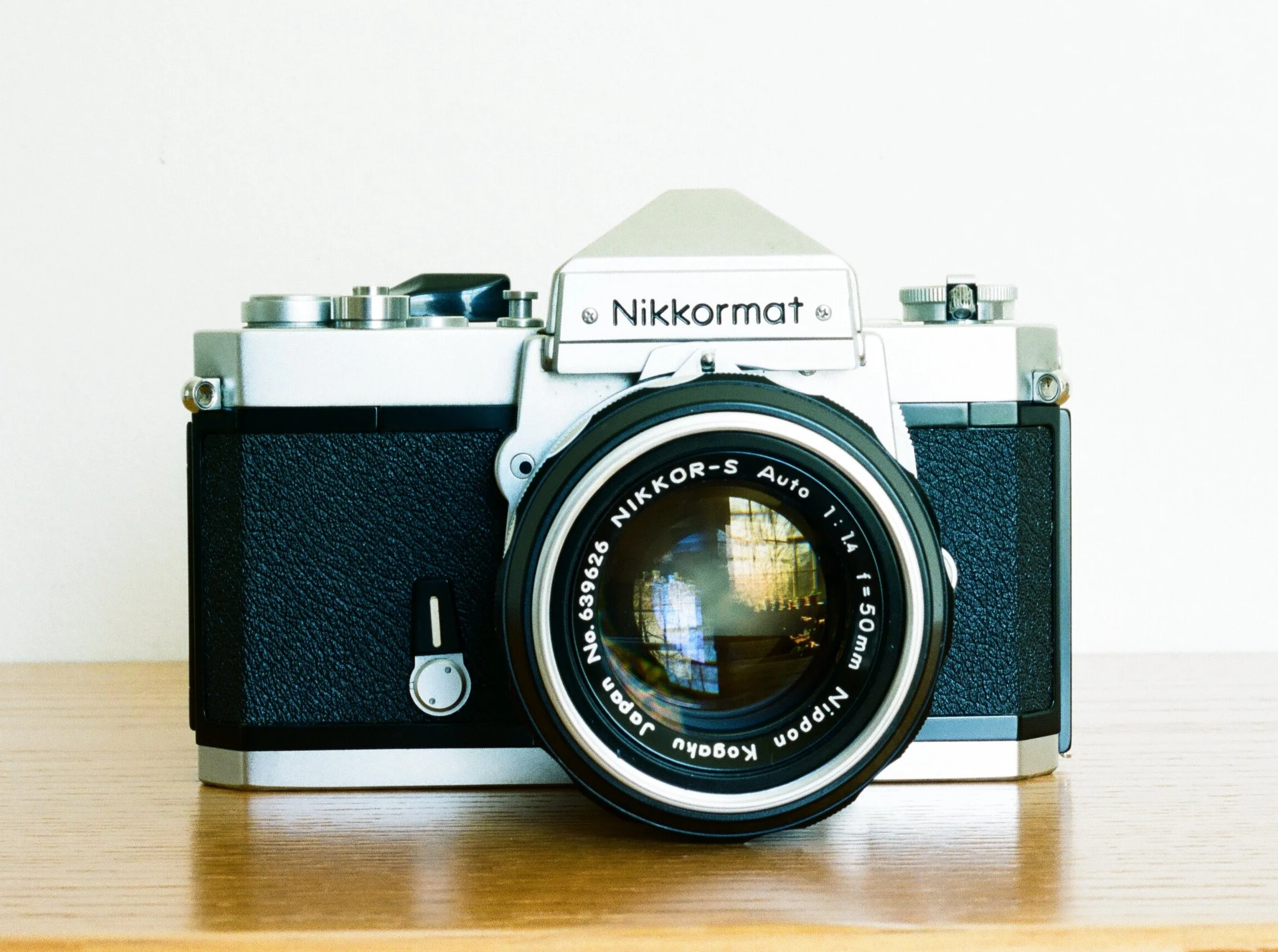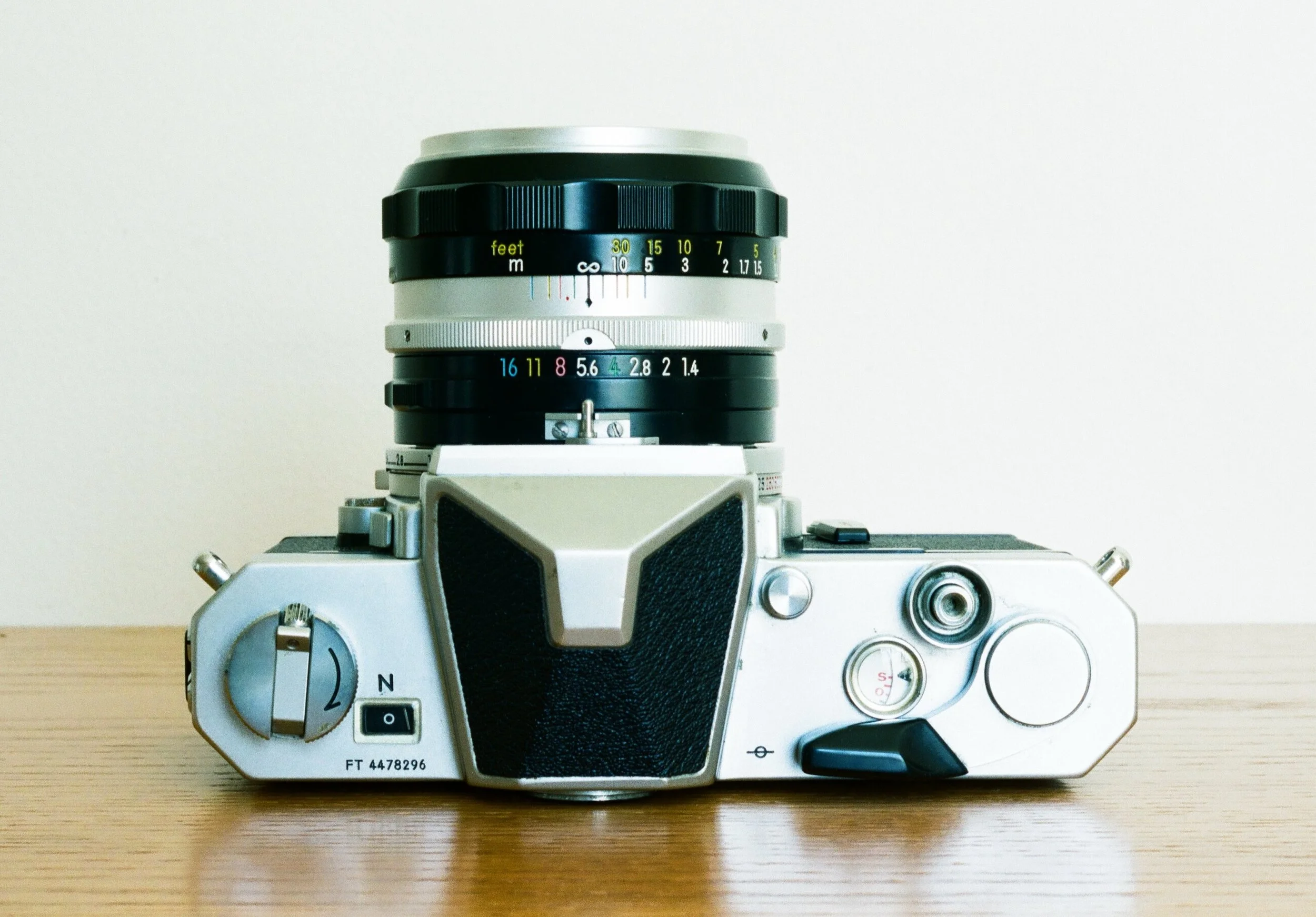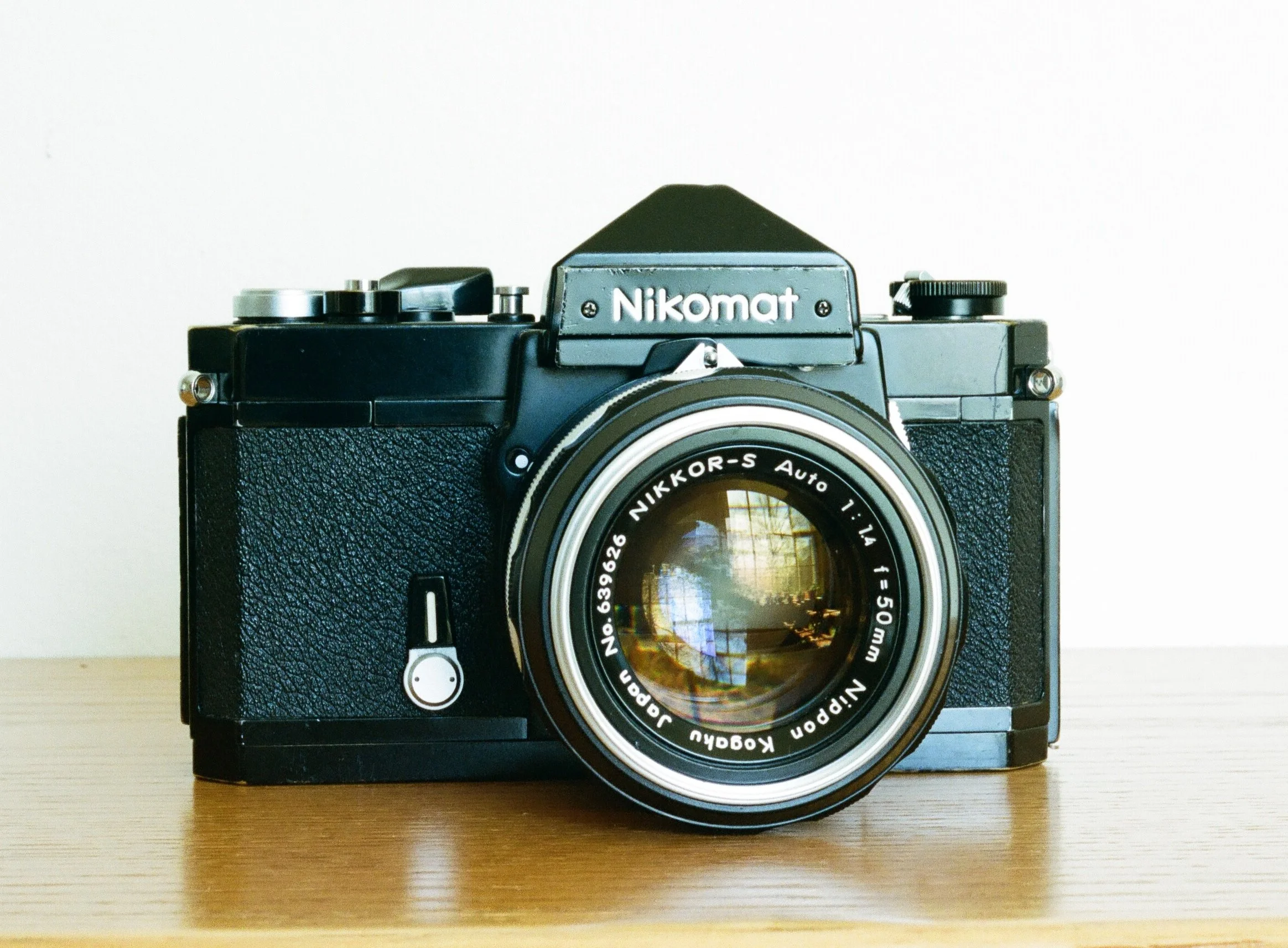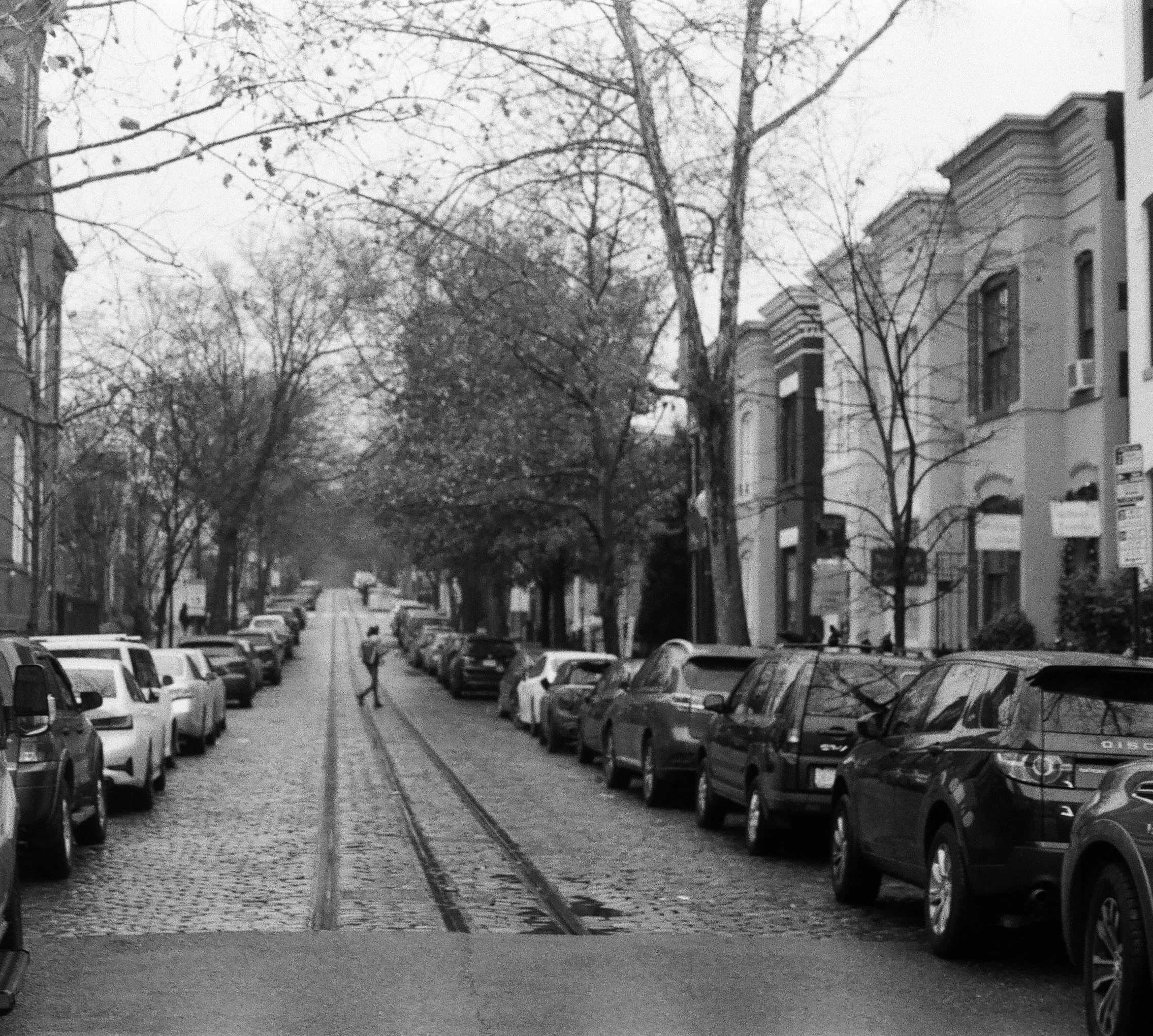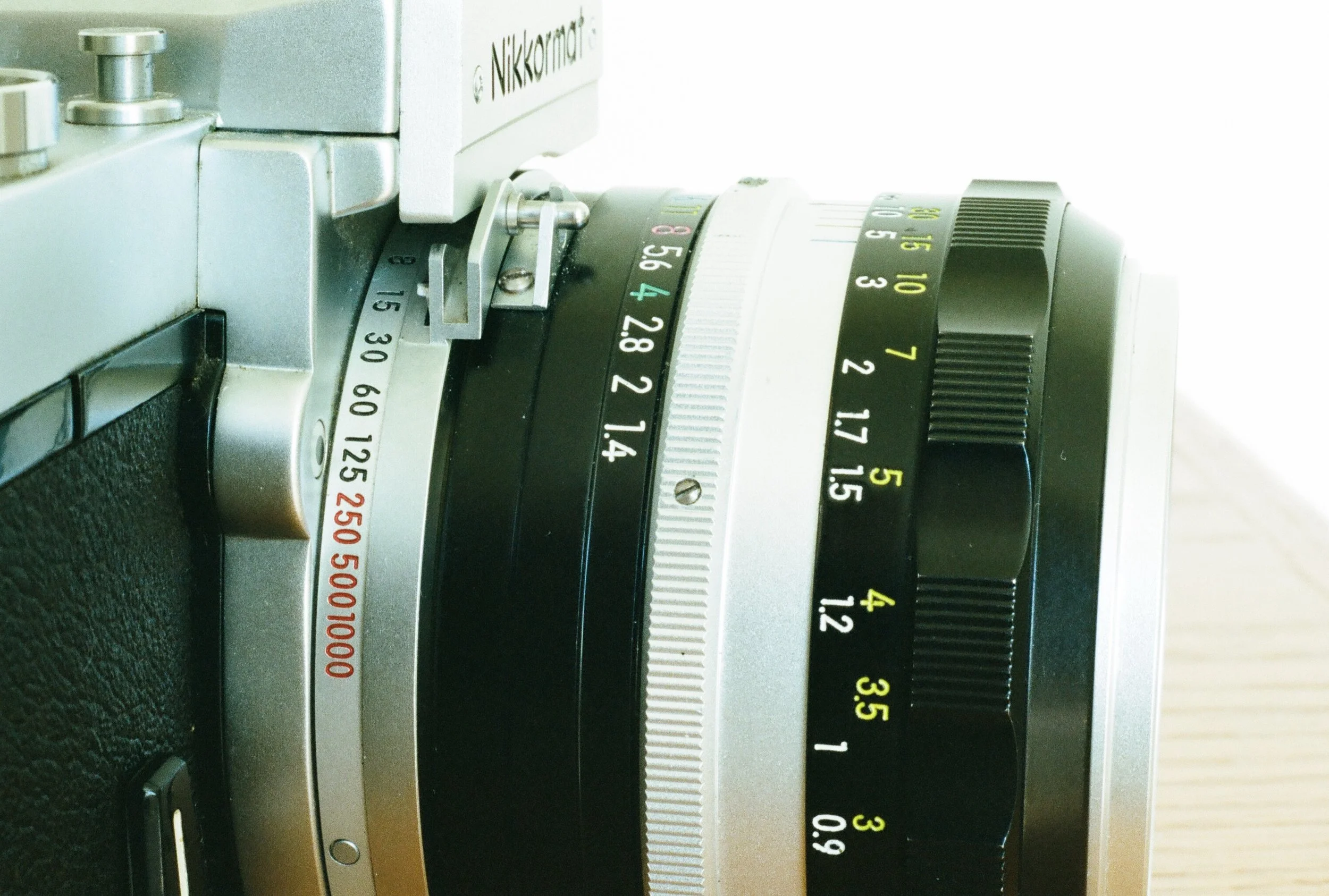Nikkormat / Nikomat
It’s like a streamlined, simpler Nikon F. Key feature: it uses the same lenses.
Nikkormat FTN 50mm f/1.4 Nikkor-S (Color photos of the camera were made with a Nikon F, 55mm f/3.5 Micro-Nikkor-P.C, and Portra 400.)
Rockville, Md. Nikomat FTN, 50mm f/2 Nikkor-H, Plus-X, late 1990s.
Nikomat, Nikkormat… What’s the difference?
The cameras are identical except for the nameplate on the prism. In Japan it was the Nikomat, elsewhere it was the Nikkormat. If this camera were a car, the Nikomat would be the JDM version.
Nikkormat FTN 50mm f/1.4 Nikkor-S
Nikkormat v. Nikon F
The Nikkormat is a way to use Nikon F lenses with a less expensive body. The size, weight and build quality are similar, and cost was reduced by eliminating some features. If those features won’t be used, then the Nikkormat is an excellent choice.
Compared to the Nikon F, the Nikkormat has:
No modularity. Prisms and focus screens are not interchangeable modules and the back does not remove. Instead, there’s a conventional rear door.
No split image focusing on the earlier models up to the FTN. A split image was added in 1975 on the FT2 model.
An integral light meter (the Nikon F’s meter is in the detachable prism).
A shutter of a different design, made by Copal rather than Nikon.
Nikomat FTN 50mm f/1.4 Nikkor-S
Design and use
The first Nikomat was introduced by Nikon in 1965 and went through a series of model iterations through the mid-1970s. Both of mine are the second-generation FTN which appeared c. 1967. It sold well, was in production a long time, and is not hard to find today. It wasn’t until 1975 that the next model, the FT2, came out. (McKeown, 1996).
This is an all-mechanical, manual exposure SLR. The battery is only for the meter, so I leave it out and use a hand-held meter or the sunny 16 rule.
Washington, D.C. Georgetown Nikomat FTN, 50mm f/2 Nikkor-H, FP4+, 2024.
A rugged, high performance machine
‘Costing roughly the same as a comparable Pentax, each successive Nikkormat model was unarguably heavier, tougher, and a more ‘professional’ feeling camera than the Pentax’ (Matanle, 1996).
Gongfu tea Silver Spring, Md. Nikomat FTN, 50mm f/1.4 Nikkor-S, FP4+, 2024.
Style
The Nikomat is a well-known camera with style. But it is not nearly as recognizable as its sibling, the legendary Nikon F.
Nikkormat cameras were handicapped in the market when they were in production, due to the lack of Nikon branding on the front. That communicated a second class status. Later, though, the Nikon name was applied to a lot of cheap plastic point n’ shoot film cameras. None were branded as Nikkormats.
San Diego, Calif. Nikomat FTN, 50mm f/2 Nikkor-H, Tri-X, mid-1990s.
Controls
On most 35mm cameras, a dial on the top deck controls the shutter speed. The Nikomat uses a collar around the lens mount instead. This is seen on some other well-known cameras including the Olympus OM-1 and the Hasselblad, and I like it.
Focus, aperture, and shutter speed controls are on the lens.
Maintenance and repair
I replaced the mirror bumper foam on the Nikkormat, that’s it. A simple job and I did it myself.
Swoosh hair. Bethesda, Md. Nikomat FTN, 50mm f/2 Nikkor-H, Lomography Fantôme Kino 8, 2024.
References / further reading
Camera manual: orphancameras.com
More references:
Long, B. Nikon: A Celebration, 3rd ed. Ramsbury, England: Crowood Press.
p. 65: ‘The Nikomat series was actually far more important in historical terms than many collectors realize’.
Matanle, I. 1996. Collecting and Using Classic SLRs. New York: Thames and Hudson.
McKeown, J.M. and J.C. 1996. McKeown’s Price Guide to Antique and Classic Cameras, 1997-1998. Grantsburg, Wis.: Centennial Photo.
p. 338: ‘The Nikkormat name never had the snob appeal of the Nikon F, and was considered by many to be the ‘poor cousin’. Those of us who used them knew otherwise… Rugged, workhorse cameras!’
Rainy afternoon. Bethesda, Md. Nikkormat FTN, 50mm f/1.4 Nikkor-S, HP5+, 2023.
